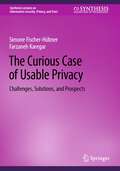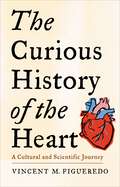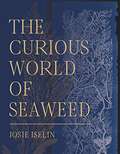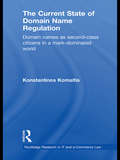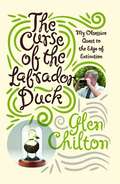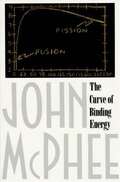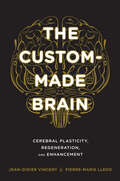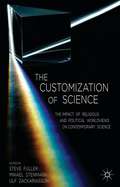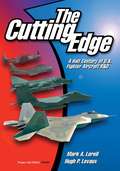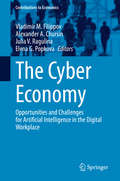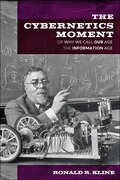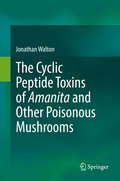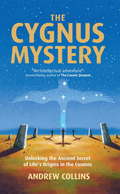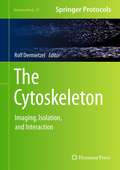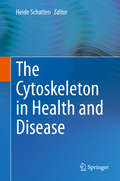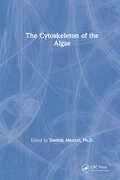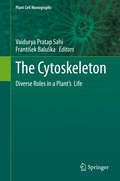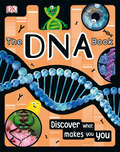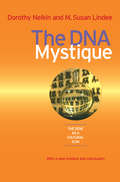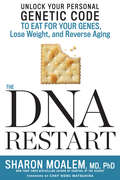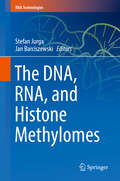- Table View
- List View
The Curious Case of Usable Privacy: Challenges, Solutions, and Prospects (Synthesis Lectures on Information Security, Privacy, and Trust)
by Simone Fischer-Hübner Farzaneh KaregarThis book journeys through the labyrinth of usable privacy, a place where the interplay of privacy and Human-Computer Interaction (HCI) reveals a myriad of challenges, solutions, and new possibilities. Establishing a solid understanding of usable privacy research, practices, and challenges, the book illuminates for readers the often shadowy corridors of such a multifaceted domain and offers guidelines and solutions to successfully traverse the challenging maze. The book does not simply focus on data protection or legislative frameworks but also on what it takes for privacy to be safeguarded, understood, embraced, and easily practiced by all. It begins with a thorough exploration of the background of privacy tools and technologies, the evolution of privacy rules and regulations, and the backdrop upon which this narrative unfolds. After establishing this context, its next important focus is the current state and future directions of the field, including thefrontiers of usable privacy research in relation to the Internet of Things (IoT), usability of PETs, and usable privacy for UX and software developers. The book also considers the often-overlooked privacy narratives of marginalized communities and delves into the complexities of user-centric privacy. Readers are provided with a blueprint for addressing these hurdles and establishing pathways for a more privacy-conscious world. The text will be of interest to students studying Computer Science, Information Systems, or Law, as well as researchers and practitioners working in the fields of usable privacy, privacy by design, Privacy-Enhancing Technologies (PETs), or HCI. All will benefit from the book’s central deliberation of a question that echoes through time and technological advancements: why does usable privacy matter?
The Curious History of the Heart: A Cultural and Scientific Journey
by Vincent M. FigueredoFor much of recorded history, people considered the heart to be the most important organ in the body. In cultures around the world, the heart—not the brain—was believed to be the location of intelligence, memory, emotion, and the soul. Over time, views on the purpose of the heart have transformed as people sought to understand the life forces it contains. Modern medicine and science dismissed what was once the king of the organs as a mere blood pump subservient to the brain, yet the heart remains a potent symbol of love and health and an important part of our cultural iconography.This book traces the evolution of our understanding of the heart from the dawn of civilization to the present. Vincent M. Figueredo—an accomplished cardiologist and expert on the history of the human heart—explores the role and significance of the heart in art, culture, religion, philosophy, and science across time and place. He examines how the heart really works, its many meanings in our emotional and daily lives, and what cutting-edge science is teaching us about this remarkable organ. Figueredo considers the science of heart disease, recent advancements in heart therapies, and what the future may hold. He highlights the emerging field of neurocardiology, which has found evidence of a “heart-brain connection” in mental and physical health, suggesting that ancient views hold more truth than moderns suspect.Ranging widely and deeply throughout human history, this book sheds new light on why the heart remains so central to our sense of self.
The Curious Human Knee
by Han YuWhere would we be without the knee? This down-to-earth joint connecting the thigh and the lower leg doesn’t receive the attention it deserves. Yet, as The Curious Human Knee reveals, it is crucial to countless facets of science, medicine, culture, and history—and even what makes us human.The science writer Han Yu provides an informative, surprising, and entertaining exploration of the human knee across time and place. She begins with our earliest ancestors, emphasizing that walking upright separates us from the apes and bipedal knees appeared long before big brains and sophisticated tools. Yu considers the intricate anatomy of the knee, its evolutionary history, and the complexity of treating knee pain, including her own. She examines why women’s knees might be more prone to damage than men’s and addresses the roles of race and class in ailments such as osteoarthritis. This book gets knee-deep into an astonishing range of topics—fashion from flappers to miniskirts and ripped jeans, cultural practices spanning Japanese knee walking and Thai boxing, and more. Yu reflects on the symbolic power of kneeling from the imperial court in China to the football field in the United States and shows why the knee figures into so many social and political phenomena.Distilling a vast amount of research in a style that is engaging, conversational, and even personal and witty, this book opens readers’ eyes to the complexity and significance of the humble knee.
The Curious World of Seaweed: Stories from the Pacific Coast
by Josie IselinMarine algae are the supreme eco-engineers of life: they oxygenate the waters, create habitat for countless other organisms, and form the base of a food chain that keeps our planet unique in the universe as we know it. In this beautiful volume Josie Iselin explores both the artistic and the biological presence of sixteen seaweeds and kelps that live in the thin region where the Pacific Ocean converges with the North American continent—a place of incomparable richness. Each species receives a detailed description of its structure, ecological importance, and humans’ scientific inquiry into it, told in scientifically illuminating yet deeply reverent and inspired prose. Throughout the writings are historical botanical illustrations and Iselin’s signature, Marimekko-like portraits of each specimen that reveal their vibrant colors—whether rosy, “olivaceous,” or grass-green—and whimsical shapes. Iselin posits that we can learn not only about the seaweeds but also from them: their resilience, their resourcefulness, their poetry and magic.
The Current State of Domain Name Regulation: Domain Names as Second Class Citizens in a Mark-Dominated World (Routledge Research in Information Technology and E-Commerce Law)
by Konstantinos KomaitisIn this book Konstantinos Komaitis identifies a tripartite problem – intellectual, institutional and ethical – inherent in the domain name regulation culture. Using the theory of property, Komaitis discusses domain names as sui generis ‘e-property’ rights and analyses the experience of the past ten years, through the Uniform Domain Name Dispute Resolution Policy (UDRP) and the Anticybersquatting Consumer Protection Act (ACPA). The institutional deficit he identifies, generates a further discussion on the ethical dimensions in the regulation of domain names and prompts Komaitis to suggest the creation of an environment based on justice. The relationship between trademarks and domain names has always been contentious and the existing institutions of the UDRP and ACPA have not assisted in alleviating the tension between the two identifiers. Over the past ten years, the trademark community has been systematic in encouraging and promoting a culture that indiscriminately considers domain names as secondclass citizens, suggesting that trademark rights should have priority over the registration in the domain name space. Komaitis disputes this assertion and brings to light the injustices and the trademark-oriented nature of the UDRP and ACPA. He queries what the appropriate legal source to protect registrants when not seeking to promote trademark interests is. He also delineates a legal hypothesis on their nature as well as the steps of their institutionalisation process that we need to reverse, seeking to create a just framework for the regulation of domain names. Finally he explores how the current policies contribute to the philosophy of domain names as second-class citizens. With these questions in mind, Komaitis suggests some recommendations concerning the reconfiguration of the regulation of domain names.
The Curse of the Labrador Duck
by Glen ChiltonIn an obsessive 82,000-mile quest for dead birds, how much trouble can one scientist get into? Finally, the world's leading authority on the extinct Labrador Duck, Dr. Glen Chilton, shares the story of his frenzied obsession to reveal the histories behind the mysterious bird -- a saga wherein he sets out to examine the remains of every Labrador Duck, conduct genetic analysis on every Labrador Duck egg, and visit every site where the duck was shot...with many a (mis)adventure along the way. More elusive than the Passenger Pigeon, the Dodo, or the Great Auk and breeding in places so obscure that no certain records exist of its nests, the Labrador Duck succumbed to extinction almost before anyone realized it was in decline. When Chilton began his travels, there were thought to be approximately fifty stuffed specimens, scattered among the museums of Europe and North America. However, as his search progressed, it became clear that some specimens had been lost to war and theft, while others lay hidden in far-flung collections, overseen by secretive curators. After traveling the equivalent of 3.3 times around the world with a series of oddball companions, Chilton finally began to close in on every known specimen...but not before he risked heavy-metal poisoning in Russia, swam naked in a glacier-fed stream, corresponded with a millionaire murderer, and narrowly avoided arrest in New York City. A magnificent blend of travel writing, science, detective work, and mishap, The Curse of the Labrador Duck is the zany adventure of one biologist's obsessive quest to uncover the mysteries of one of the world's most enigmatic birds.
The Curve of Binding Energy: A Journey into the Awesome and Alarming World of Theodore B. Taylor
by John McPheeThis is a book about nuclear energy both for electric power production and for bombs. In particular, it focuses on the dangers of a single person or small group obtaining the materials (most likely from some part of the nuclear power production system) to produce a bomb. The level of worry about this possibility come mainly from a particular nuclear physicist, Ted Taylor. But the sources for this book range far and wide over both the history and people involved in both nuclear bomb making and nuclear power production.
The Custom-Made Brain: Cerebral Plasticity, Regeneration, and Enhancement
by Pierre-Marie Lledo Jean-Didier VincentTwo leading neuroscientists introduce the concepts of "cerebral plasticity" and the "regenerating brain," describing what we know now about the processes through which the brain constantly reconstructs itself and the potential benefits this knowledge could have in addressing concerns for neurological, cognitive, and emotional health.The authors begin with a survey of the fundamental scientific developments that led to our current understanding of the regenerative mind, elucidating the breakthrough neurobiological studies that paved the way for our present understanding of the brain's plasticity and regenerative capabilities. They then discuss the application of these findings to such issues as depression, dyslexia, schizophrenia, and cognitive therapy, incorporating the latest technologies in neuroimaging, optogenetics, and nanotechnology. Their work shows the brain is anything but a static organ, ceasing to grow as human beings become adults. Rather, the brain is dynamic, evolving organically in relation to physical, cultural, historical, and affective stimuli, a plasticity that provides early hope to survivors of trauma and degenerative disorders.
The Custom-Made Brain: Cerebral Plasticity, Regeneration, and Enhancement
by Pierre-Marie Lledo Jean-Didier Vincent Laurence GareyTwo leading neuroscientists introduce the concepts of "cerebral plasticity" and the "regenerating brain," describing what we know now about the processes through which the brain constantly reconstructs itself and the potential benefits this knowledge might have in addressing concerns for neurological, cognitive, and emotional health.The authors begin with a survey of the fundamental scientific developments that led to our current understanding of the regenerative mind, elucidating some of the breakthrough neurobiological studies that paved the way for our present understanding of the brain's plasticity and regenerative capabilities. They then discuss the application of these findings to such issues as depression, dyslexia, schizophrenia, and cognitive therapy, incorporating the latest technologies in neuroimaging, optogenetics, and nanotechnology. Their work shows the brain is anything but a static organ, ceasing to grow as human beings become adults. Rather, the brain is dynamic, evolving organically in relation to physical, cultural, historical, and affective stimuli, a plasticity that provides great hope to survivors of trauma and degenerative disorders.
The Customization of Science
by Steve Fuller Mikael Stenmark Ulf ZackariassonThis collection explores whether and how religious and secular worldviews and political ideologies held by scientists, citizens, decision-makers and politicians influence science as practiced and understood today. Contributors explore the social and scientific repercussions of 'customizing' science to fit the needs and interests of various groups.
The Cutting Edge: A Half Century of U. S. Fighter Aircraft R and D
by Mark A. Lorell Jennifer Gross Erik Moller Elizabeth Giddens Hugh P. LevauxThe proposition that innovation is critical in the cost-effective design and development of successful military aircraft is still subject to some debate. RAND research indicates that innovation is promoted by intense competition among three or more industry competitors. Given the critical policy importance of this issue in the current environment of drastic consolidation of the aerospace defense industry, the authors here examine the history of the major prime contractors in developing jet fighters since World War II. They make use of an extensive RAND database that includes nearly all jet fighters, fighter-attack aircraft, and bombers developed and flown by U.S. industry since 1945, as well as all related prototypes, modifications, upgrades, etc. The report concludes that (1) experience matters, because of the tendency to specialize and thus to develop system-specific expertise; (2) yet the most dramatic innovations and breakthroughs came from secondary or marginal players trying to compete with the industry leaders; and (3) dedicated military R&D conducted or directly funded by the U.S. government has been critical in the development of new higher-performance fighters and bombers.
The Cutting Edge: Conserving Wildlife in Logged Tropical Forests (Biology and Resource Management Series)
by Robert A. John G. Robinson Alejandro Grajal Eds. FimbelRecent decades have seen unprecedented growth in the scale and intensity of industrial forestry. Directly and indirectly, it has degraded the wildlife and ecological integrity of these tropical forests, prompting a need to evaluate the impact of current forest management practices and reconsider how best to preserve the integrity of the biosphere.Synthesizing the body of knowledge of leading scientists and professionals in tropical forest ecology and management, this book's thirty chapters examine in detail the interplay between timber harvesting and wildlife, from hunted and protected habitats to invertebrates and large mammal species.Collectively, the contributors suggest that better management is pivotal to the maintenance of the tropics' valuable biodiversity, arguing that we must realize that tropical forests harbor the majority (perhaps 70 to 80 percent) of the world's animal species. Further, they suggest modifications to existing practices that can ensure a better future for our valuable resources.
The Cyber Economy: Opportunities and Challenges for Artificial Intelligence in the Digital Workplace (Contributions to Economics)
by Elena G. Popkova Vladimir M. Filippov Alexander A. Chursin Julia V. RagulinaThe transition to Industry 4.0, and the subsequent ubiquitous digitalization and integration of artificial intelligence (AI) into the economic system, has set the stage for a fundamental change - one towards forming a cyber economy: a type of economy in which humans are economic subjects who interact with or are confronted with AI. This book examines these interactions and specifically analyzes the overall effects of digitalization on the workplace, and on the economic system of the future. Scholars from a diverse range of fields address both the challenges and opportunities of using AI in business sectors, as well as the role of people dealing with digital channels. In closing, the book discusses the need to, and options for, training and educating the labor force in the digital age.
The Cybernetics Moment: Or Why We Call Our Age the Information Age (New Studies in American Intellectual and Cultural History)
by Ronald R. KlineHow did cybernetics and information theory arise, and how did they come to dominate fields as diverse as engineering, biology, and the social sciences?Winner of the CHOICE Outstanding Academic Title of the Choice ACRLOutstanding Academic Title, ChoiceCybernetics—the science of communication and control as it applies to machines and to humans—originates from efforts during World War II to build automatic antiaircraft systems. Following the war, this science extended beyond military needs to examine all systems that rely on information and feedback, from the level of the cell to that of society. In The Cybernetics Moment, Ronald R. Kline, a senior historian of technology, examines the intellectual and cultural history of cybernetics and information theory, whose language of "information," "feedback," and "control" transformed the idiom of the sciences, hastened the development of information technologies, and laid the conceptual foundation for what we now call the Information Age. Kline argues that, for about twenty years after 1950, the growth of cybernetics and information theory and ever-more-powerful computers produced a utopian information narrative—an enthusiasm for information science that influenced natural scientists, social scientists, engineers, humanists, policymakers, public intellectuals, and journalists, all of whom struggled to come to grips with new relationships between humans and intelligent machines.Kline traces the relationship between the invention of computers and communication systems and the rise, decline, and transformation of cybernetics by analyzing the lives and work of such notables as Norbert Wiener, Claude Shannon, Warren McCulloch, Margaret Mead, Gregory Bateson, and Herbert Simon. Ultimately, he reveals the crucial role played by the cybernetics moment—when cybernetics and information theory were seen as universal sciences—in setting the stage for our current preoccupation with information technologies.
The Cycad Botanists (Memoirs of The New York Botanical Garden #123)
by Roy Osborne Dennis Wm. StevensonThis work provides short biographies of 50 historical figures in cycad biology. It covers those starting in the early 17th century through the 21st century. Each of the biographies covers a career including birth and death, schooling, places of employment, travel in field work, publications, place of their cycad type specimens, list of species described and list of species named for them. The latter two items are illustrated along with any honorific items such as currency, stamps, and so on. Additionally, each entry has a portrait. The purpose of this work is to bring together in one place treatments on the lives, work, publications, illustrations, and type specimens of the historic figures in cycad biology. It will be of interest to researchers in cycads but also to the large, amateur community of cycad enthusiasts and others interested in gymnosperms and the history of botany. The book will be featured at the triennial meetings on cycad biology at New York Botanical Garden.
The Cyclic Peptide Toxins of Amanita and Other Poisonous Mushrooms
by Jonathan WaltonPoisonous mushrooms have fascinated scientists and laypersons alike for thousands of years. Almost all mushroom fatalities are due to the genus Amanita, whose poetic common names (death cap, destroying angel) attest to their lethality. In his classic 1986 book, Theodor Wieland covered the state of our knowledge about the chemistry and biochemistry of the toxins of Amanita mushrooms up until that time, with a particular focus on the decades of chemical research by him and the Wieland dynasty (including his father, brother, brother-in-law, and cousin). Wieland’s book is now mainly of historical interest, with its exhaustive overview of the early chemical studies done without benefit of methods taken for granted by modern chemists. This book is a complete top-to-bottom revision of Wieland’s 1986 book. The material covers history, chemistry, and biology with equal thoroughness. It should be of interest to natural products chemists and biologists, professional and amateur mycologists, and toxicologists. The three scientific fields that are most relevant to the book are natural products chemistry, mycology, and fungal molecular genetics. Dr. Walton is an expert in all three. To maximize the broad utility and appeal of the book, care has been taken to define all technical terms specific to a particular discipline, so that, for example, mycologists will be able to understand the relevant chemistry, and chemists will be able to understand the relevant fungal biology.
The Cygnus Mystery: Unlocking the Ancient Secret of Life's Origins in the Cosmos
by Andrew CollinesThe Cygnus Constellation holds the key to proving that life originated in the heavens--and will ultimately return there. Best-selling author Andrew Collins has uncovered an astronomy that is about 17,000 years old, with standing stones, temples, and monuments across the globe oriented towards Cygnus's stars. He also found that the use of deep caves by Palaeolithic man led to the rise of religious thought and the belief in life's stellar origins. Now modern-day technology has confirmed that high-energy particles come from a binary star known as Cygnus X3. Ancient people knew what science is finally verifying: that the DNA of life came originally from deep space.
The Cytoskeleton
by Rolf DermietzelThe cerebral cytoskeleton, considered to be the working horse in brain tissues, becomes particularly important when degenerative diseases of the nervous system are considered. The Cytoskeleton: Imaging, Isolation, and Interaction assembles chapters on general aspects of the cytoskeleton, which are helpful for polishing knowledge of the cytoskeleton in a brief and informative way, and these pieces are flanked by a collection of detailed protocols on diverse emerging techniques including in vivo and in vitro imaging of the cytoskeleton at work as well as proteomics methodologies addressing preparative strategies for the isolation of cytoskeletal components of the central nervous system. Written for the popular Neuromethods series, this work contains the kind of meticulous descriptions and implementation advice to guarantee successful results. Authoritative and cutting-edge, The Cytoskeleton: Imaging, Isolation, and Interaction provides a compilation of papers written by a team of experts which aims to strengthen our efforts at overcoming at least some of the fatal outcomes of the diseased brain cytoskeleton.
The Cytoskeleton in Health and Disease
by Heide SchattenThis volume addresses the structural and functional roles of the cytoskeleton and its dysfunctions which often lead to disease. It provides thorough discussion of microtubules, microfilaments, intermediate filaments, and cytoskeletal functions and dysfunctions in different organ systems. Comprehensive yet concise. The Cytoskeleton In Health And Disease presents cutting-edge discoveries balanced with background information and highlights the new aspects of the research and its impact on the design of new strategies or the identification of new targets for therapeutic intervention. There is a significant need for a book on this topic, as interest in the cytoskeleton continues to grow as causes and cures for cytoskeletal diseases are further explored in biomedical research. This book is essential reading for scientists, students, and teachers interested in expanding their knowledge related to the cytoskeleton. New researchers entering the field will find classic and well as contemporary information not easily found in the current literature or internet resources.
The Cytoskeleton of the Algae
by Diedrik MenzelThe Cytoskeleton of the Algae provides a comprehensive examination of the structural features of the cytoskeleton in phylogenetic branches of algae. The book also analyzes the possible functions of cytoskeletal components using structural, physiological, genetic, and molecular approaches. Many taxa are described in detail, mirroring the dramatic progress that has been made in recent years in this new research field. Many unique structural elements and motility phenomena are described for the first time, and other features common to all plant cells, such as cell polarity, cytoplasmic streaming, mitosis, cell wall deposition, and contractile events are analyzed using algae as experimental model systems. The Cytoskeleton of the Algae reflects the enormous impact that research on the algal cytoskeleton has on both phycology and plant cell biology, and it will serve as an excellent reference volume for researchers in this area.
The Cytoskeleton: Diverse Roles in a Plant’s Life (Plant Cell Monographs #24)
by František Baluška Vaidurya Pratap SahiThis book focuses on the plant cytoskeleton and its various cross-talks with other cellular components leading to its role in plant growth and development. It not only allows the geometric and signaling dimensions of cells, but is also very important in physiological processes. The book discusses the recent studies showing the role of actin and microtubule cytoskeleton interactions in cell-wall assembly and dynamics. The authors examine the role of both microtubules in the mechanics of plant cells, and actin filaments in the motility of chloroplasts. Based on recent advances in the study of the acto-myosin complex using high-resolution microscopy, they propose a new model for intracellular transport in plants. Exploring an almost-forgotten field of bioelectricity in the context of the cytoskeleton, the book highlights connections between the dynamic actin filaments and the bioelectricity of membranes and demonstrates that the plant cytoskeleton is involved in the distribution of plant hormones. Lastly, it addresses the role of endomembrane -cytoskeleton interactions to show the importance of the cytoskeleton in organelle morphogenesis and cellular functions. Studies in various plant models have shown how the actin filament and microtubules control and coordinate plant cell growth and development. This book summarizes the mechanisms underlying these functions.
The DNA Book (The Science Book Series)
by DKThis book introduces children ages 7-9 to the amazing science of DNA, genetics, and what makes you you.It's inside every living plant and animal, from the tiniest seed to the person standing next to you, but how much do you know about DNA? This book gives children an in-depth look at DNA and its role in all living things--from why we have different-colored eyes to why we age. Discover what DNA is, what it does, and how it shapes our lives, including inheritance and why we look like our parents; forensic science and how DNA evidence helps catch criminals; and genetic engineering and if we could bring dinosaurs back to life. With fun illustrated DNA characters, clear diagrams, and astonishing photographs, children will love learning about themselves and this all-important molecule.The DNA Book is packed with colorful illustrations and mind-boggling facts, perfect for curious young minds. It's a great addition to any STEAM library and decodes how DNA underpins life on Earth.
The DNA Mystique: The Gene as a Cultural Icon
by Nelkin Dorothy Lindee M. SusanThe DNA Mystique suggests that the gene in popular culture draws on scientific ideas but is not constrained by the technical definition of the gene as a section of DNA that codes for a protein. In highlighting DNA as it appears in soap operas, comic books, advertising, and other expressions of mass culture, the authors propose that these domains provide critical insights into science itself. With a new introduction and conclusion, this edition will continue to be an engaging, accessible, and provocative text for the sociology, anthropology, and bioethics classroom, as well as stimulating reading for those generally interested in science and culture.
The DNA Restart: Unlock Your Personal Genetic Code to Eat for Your Genes, Lose Weight, and Revers e Aging
by Sharon MoalemThe DNA Restart turns traditional dietary advice on its head with groundbreaking research that demonstrates that we all require different diets based on our genes. In The DNA Restart, Sharon Moalem, MD, PhD, provides a revolutionary step-by-step guide to the diet and lifestyle perfect for your individual genetic makeup. A physician, scientist, neurogeneticist, and New York Times bestselling author, Dr. Moalem has spent the last two decades researching and formulating how to reset your own genetic code using five essential pillars: eat for your genes; reverse aging; eat umami; drink oolong tea; and slow living. The DNA Restart plan utilizes decades of in-depth scientific research into genetics, epigenetics, nutrition, and longevity to explain the pivotal role genes play in the journey to ideal weight and health status. Dr. Moalem’s unique 28-day plan shows how to upgrade sleep, harness sensory awareness, and use exercise to reset your DNA; how to determine the right amounts of protein, carbs, and fats you need for your individual genetic make-up; and how to incorporate umami-rich recipes and oolong tea into your diet to genetically thrive. Delicious recipes with mix-and-match meal plans, inspiring testimonials, and genetic self-tests round out this paradigm shifting diet book.
The DNA, RNA, and Histone Methylomes (RNA Technologies)
by Jan Barciszewski Stefan JurgaThis book reviews the chemical, regulatory, and physiological mechanisms of protein arginine and lysine methyltransferases, as well as nucleic acid methylations and methylating enzymes. Protein and nucleic acid methylation play key and diverse roles in cellular signalling and regulating macromolecular cell functions.Protein arginine and lysine methyltransferases are the predominant enzymes that catalyse S-adenosylmethionine (SAM)-dependent methylation of protein substrates. These enzymes catalyse a nucleophilic substitution of a methyl group to an arginine or lysine side chain nitrogen (N) atom. Cells also have additional protein methyltransferases, which target other amino acids in peptidyl side chains or N-termini and C-termini, such as glutamate, glutamine, and histidine. All these protein methyltransferases use a similar mechanism. In contrast, nucleic acids (DNA and RNA) are substrates for methylating enzymes, which employ various chemical mechanisms to methylate nucleosides at nitrogen (N), oxygen (O), and carbon (C) atoms. This book illustrates how, thanks to there ability to expand their repertoire of functions to the modified substrates, protein and nucleic acid methylation processes play a key role in cells.
